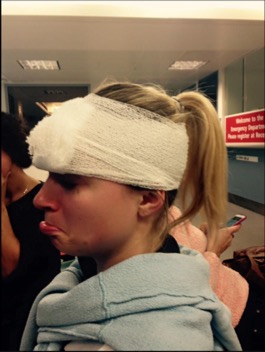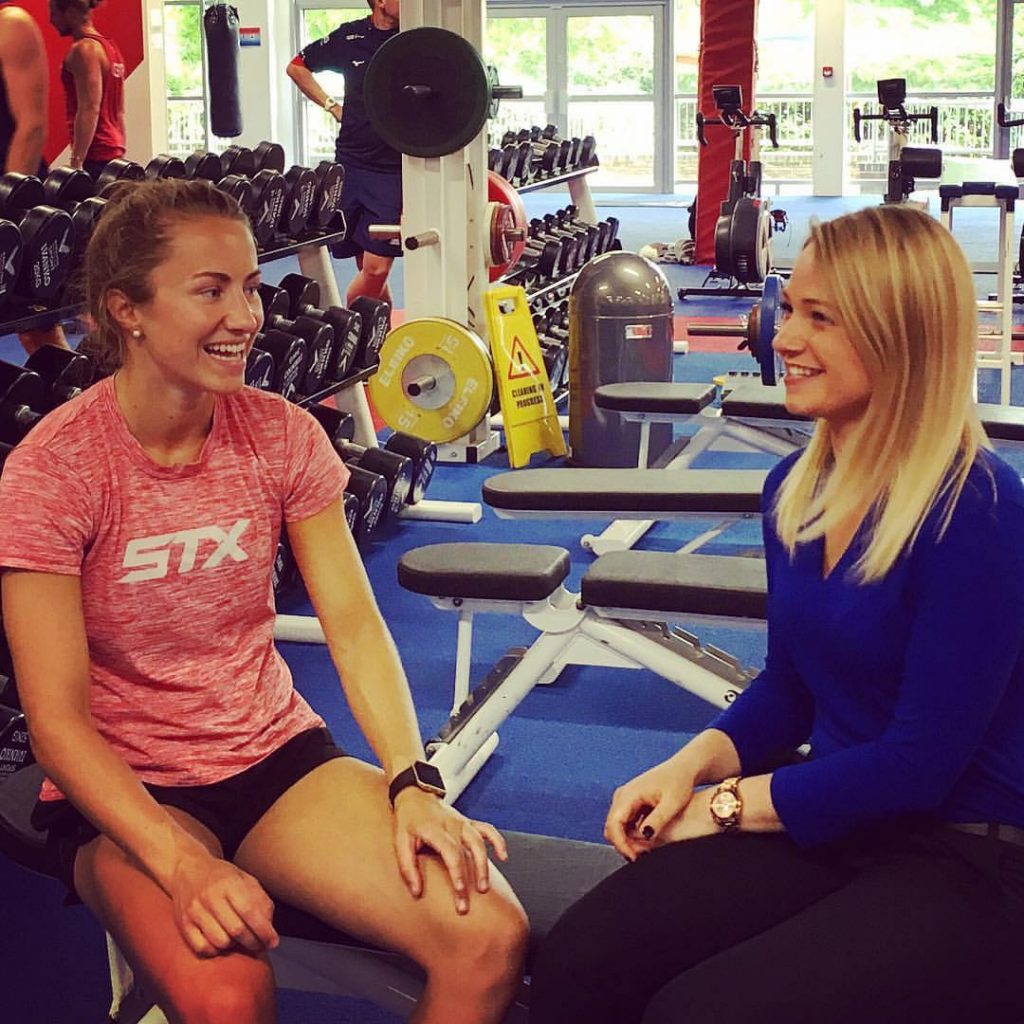“I would go back to hockey if there was some form of head protection” — Retired hockey international Katie Shanahan on head injuries and the need for extra protection
“I was taking down a ball and a defender went to try and clear it. I was so close to her that it just shot straight into my face, in the area between my eyebrows.
“I felt like I’d been shot. I crashed onto the floor and I think I passed out for about ten seconds. I just remember falling to the floor, lifting my head and blood was coming out like a tap.”
These are the words of Katie Shanahan — former England international hockey player and current sports journalist — who believes there is an urgent need for reform in hockey. This comes after a serious head injury while playing for Surbiton that left her permanently side-lined from the game.

The issues surrounding concussion and head injuries in sport have become increasingly prevalent in recent years.
The dangers repetitive head injuries pose are more well known. Particularly, links to dementia and epilepsy have been reported by health organisations, such as Headway — the brain injury association.
Significant strides for increased protection can be seen in America, where soccer players under the age of 11 are no longer allowed to head the ball — a concept being considered by English football and championed by head injury victim, Ryan Mason. While football has begun to take the issues more seriously, other sports, such as hockey, are arguably being left behind.
Luckily for Katie, her injury took place in Oxford, which holds one of the best plastic surgery hospitals in the UK. She was rushed there and immediately informed that surgery was needed. However, this wasn’t the end of her treatment.
“The impact of the ball knocked my spine out of place, which I didn’t realise for a while. It was only when I went to see a physio and he said your eyes are wonky that I did,” Katie explained.
“The ball had pushed all my facial bones up and knocked my spine out of place. I had to have spinal rehab for about six months which was really painful.”
Although Katie has since made a full physical recovery, the injury and the retirement itself has left her struggling more mentally.
She said: “They say that if you have a big accident you need to go back straight away. I didn’t do that, I left it too long. Now I’m just really frightened to go back, which is silly because I was the one diving for short corners, jumping for the ball and getting the deflection. I would always be the one to put my body on the line.”
The injury has left Katie suffering with flashbacks, which make it difficult to return to the field. Despite now regularly playing football, the flashbacks, prolonged treatment and working weekends, have meant that Katie has not picked up a hockey stick since the injury — which was three years ago.

“If I’m honest, I really miss hockey. I wish I could get over the flashbacks. It’s quite hard to come to terms with what happened and I’m just a bit scared to go back and play. I think because it was my face, you just think it happened so easily and could easily happen again,” she said.
Importantly, Katie’s injury is not an uncommon one. Head injuries are a frequent occurrence and are thought of as almost ingrained in the culture of the game.
“When I had my accident, a number of people told me they remembered getting a ball to their face, shattering an eye socket, or breaking a nose and having to have surgery. It’s a really common injury.
“In the culture of hockey, you get up and carry on. You shrug it off. I’ve been knocked out lots of times in hockey. They try to teach you not to go into the side of one another, but you can’t stop your instincts sometimes.”
Katie strongly believes this is something that needs to be looked at. Alex Danson, Shona McCallin and Nicola White — three of Great Britain’s gold medallists — are all currently out injured with concussion, highlighting its prevalence and need for reform.
“It’s definitely something the hockey authorities should be looking at,” Kate urged. “I’ve spoken to the International Hockey Federation (FIH) because there’s so many people getting injuries.”
“They wear a helmet in the NFL, lacrosse and cricket. A hockey ball is harder than a cricket ball, so why don’t hockey players have any form of protection?”
Embed from Getty ImagesPlastic masks were introduced in 2015, but only for short corners. Despite the dangers, no headgear is used throughout the rest of the match.
“I’ve asked a few hockey players — some think it’s a good idea and some thinks it’s silly. So is it going to take something really bad to happen for this to be looked at?”
Worryingly, a tragic event has already occurred. Tom Wilson, 22, died instantly after a blow to the head in 2015 while playing for his club Old Loughtonians in Essex. And this was only during training.
A clear issue is at large here, but change doesn’t seem to be on the way. Katie recognises that it’s a very hard sell to hockey players and the FIH alike.
“Trying to get people on board with the helmet idea is so hard because people can’t imagine what it would look like. Maybe visually, people will think they can’t see as clearly,” Katie said.
“But it’s certainly a talking point. Some people are all for it and some people are very against it.”
As long as it’s not mandatory, and until the numbers of those wearing protective gear increases, the issues will simply remain.
But if the studies are to be believed, and the effects of repeated damage to the head are as severe as feared, then perhaps safety should be prioritised over profits, especially with the staggeringly high number of head injuries in the game.
Katie said: “Maybe hockey needs to wake up a bit, step back a bit and think about how to protect the players. Put it this way, I would go back to hockey if there was some form of protection.”
Featured photograph/Katie Shanahan